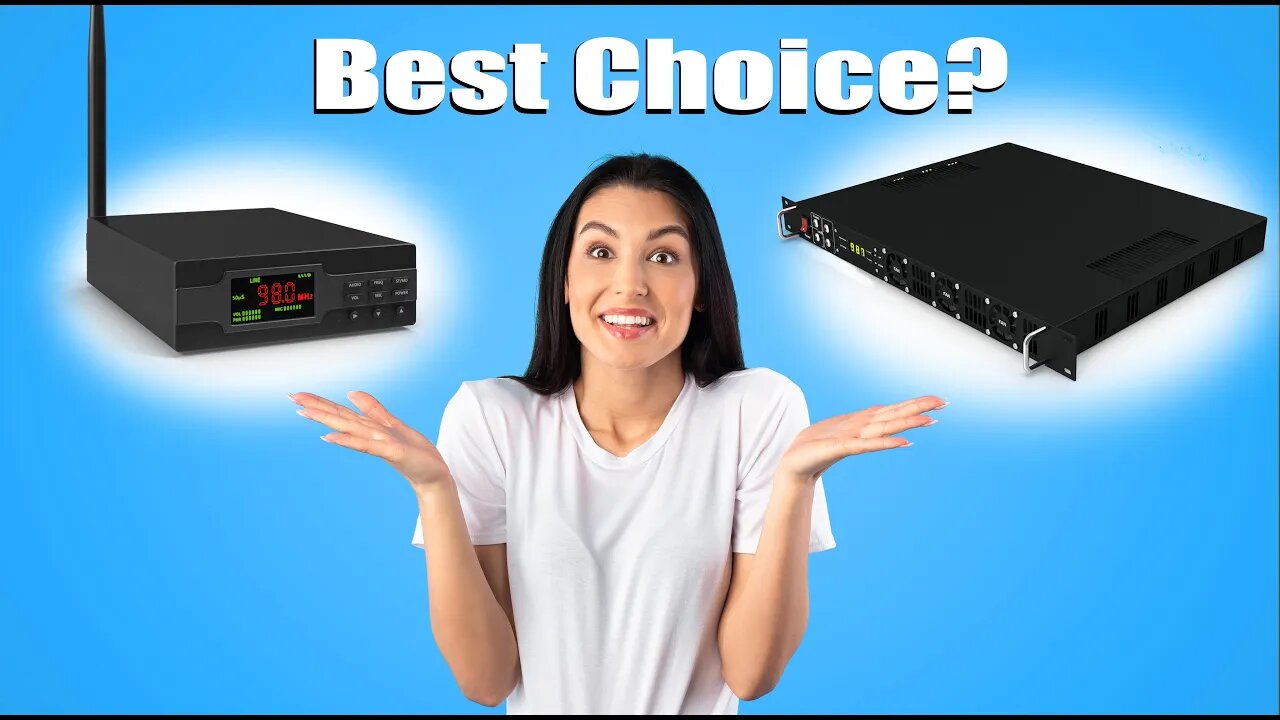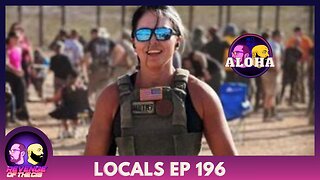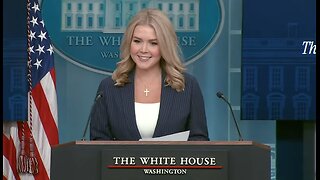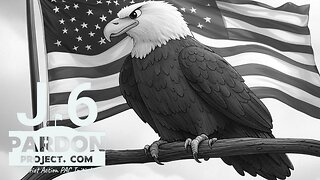Premium Only Content

FM Radio Station TRANSMITTERS. How To Choose The Best Possible Transmitter For Your Radio Station
This video will show you how to choose the RIGHT transmitter for your radio station. I will also show you how to tell which transmitters are good value for money, which ones sound better and which ones give the best signal range.
OK so Choosing the right transmitter for your radio station can make a difference to your sound quality, your signal range and more importantly if you will cause interference with other signals.
So when you decide on a transmitter, it should not be just because it looks cool or is cheaper or has some high power level claim.
Having the strongest transmitter is not as important as you think and might actually be something you don’t want. I will explain this more as we go so keep watching.
Firstly there are two types of transmitters. They are FCC compliant and
non-FCC compliant.
If you have a license to broadcast you must have an FCC-compliant transmitter.
In many countries, the transmitter does not have to be FCC approved but it must at least meet the minimum specifications which are normally at least as strict as FCC regulations or you can lose your license. If you don’t have a license and are running a hobby radio station then you are better off having an FCC-compliant transmitter anyway because non FCC-compliant transmitters can be very bad as far as causing interference and going out of the specifications allowed by the laws in your country. Even if you are below the signal strength allowed in your country, if you interfere with some other people's signal you can run into some serious shit.
I'm talking about legal and civil cases.
Coming up, how to know if the sound quality will be good even before hearing the transmitter.
But if you just want to have fun and not really make a radio station, then the best and most fun can be to just buy a little cheap FM transmitter kit. These normally only put out about 30 Mw or so, which may seem like a tiny amount but you will be shocked how far the signal will go.
I will do a video in future to show the build of one of these little transmitters. Also, keep in mind that because of the laws in your country you might not actually be allowed to even use these low-power transmitters.
So be sure to check that first but in many countries, little transmitters like this can be used from about 25 milliwatts to 100 milliwatts.
I will put links in the description for transmitters that are good for licensed stations
And even non-licensed stations and even ones that well let's just say…use at your own risk. Seriously don’t buy this stuff but hey if you have a thing for cheap junk and have a bit of a death wish…who am I to stand in your way.
If you are not just wanting to play with FM signals and want to choose a ready-built transmitter for your radio station there are four factors to keep in mind: They are how far you want to transmit, the reliability of the transmitter, what quality of sound you care about and the cost of the transmitter.
Let’s start with sound quality. That’s what a lot of people care about and rightly so.
Most FCC-approved transmitters will provide an audio response graph like this. If you have not seen one of these before it just shows how the audio section of the transmitter responds to the input audio frequencies across the frequencies of 20 Hz to 20 KHz, which is the frequency range of the human ear and therefore all audio equipment.
What you want is a very flat curve. If there are big spikes or bumps it means that the sound equalization is not good. The idea is to not enhance or defeat any frequency. You might be thinking WHAT? No man I want a transmitter with some fat base and some sweet treble. Ah well no. That would be a bad transmitter.
The equalization where you boost the bass and treble and so on is something you should be able to choose with the use of a graphic equalizer or a multi-band processor. So you want the curve as flat as possible.
-
 LIVE
LIVE
Melonie Mac
2 hours agoLet's Watch Playstation State of Play
565 watching -
 LIVE
LIVE
Revenge of the Cis
3 hours agoLocals Episode 196: Aloha
439 watching -
 1:05:34
1:05:34
In The Litter Box w/ Jewels & Catturd
22 hours agoReturn to Sender | In the Litter Box w/ Jewels & Catturd – Ep. 740 – 2/12/2025
49.6K26 -
 1:32:17
1:32:17
The Quartering
4 hours agoDOGE Storms the Department of Education, Trump FIRES USAID head, and Teacher freed from Russia
95.4K44 -
 59:57
59:57
The White House
4 hours agoPress Secretary Karoline Leavitt Briefs Members of the Media, Feb. 12, 2025
224K228 -
 LIVE
LIVE
John Crump Live
4 hours agoBreaking Down The J6 Pardons With The J6 Pardon Project
181 watching -
 1:09:47
1:09:47
Tucker Carlson
4 hours agoKen Paxton: How Soros Protects Drug Cartels, Being Blacklisted by Fox News, and the Laken Riley Act
157K120 -
 1:23:49
1:23:49
Film Threat
8 hours agoCAPTAIN AMERICA: BRAVE NEW WORLD REVIEW (NON-SPOILER) | Hollywood on the Rocks
16.1K4 -
![[Ep 607] Constitutional Crisis! There Is No Proof! AAARRRGG! – Leftist Lunacy & Why It Will Fail](https://1a-1791.com/video/fwe2/bb/s8/1/3/0/u/O/30uOx.0kob-small-Ep-607-Constitutional-Crisi.jpg) LIVE
LIVE
The Nunn Report - w/ Dan Nunn
2 hours ago[Ep 607] Constitutional Crisis! There Is No Proof! AAARRRGG! – Leftist Lunacy & Why It Will Fail
338 watching -
 3:19:53
3:19:53
Right Side Broadcasting Network
7 hours agoLIVE REPLAY: White House Press Secretary Karoline Leavitt Holds a Press Briefing - 2/12/25
190K67